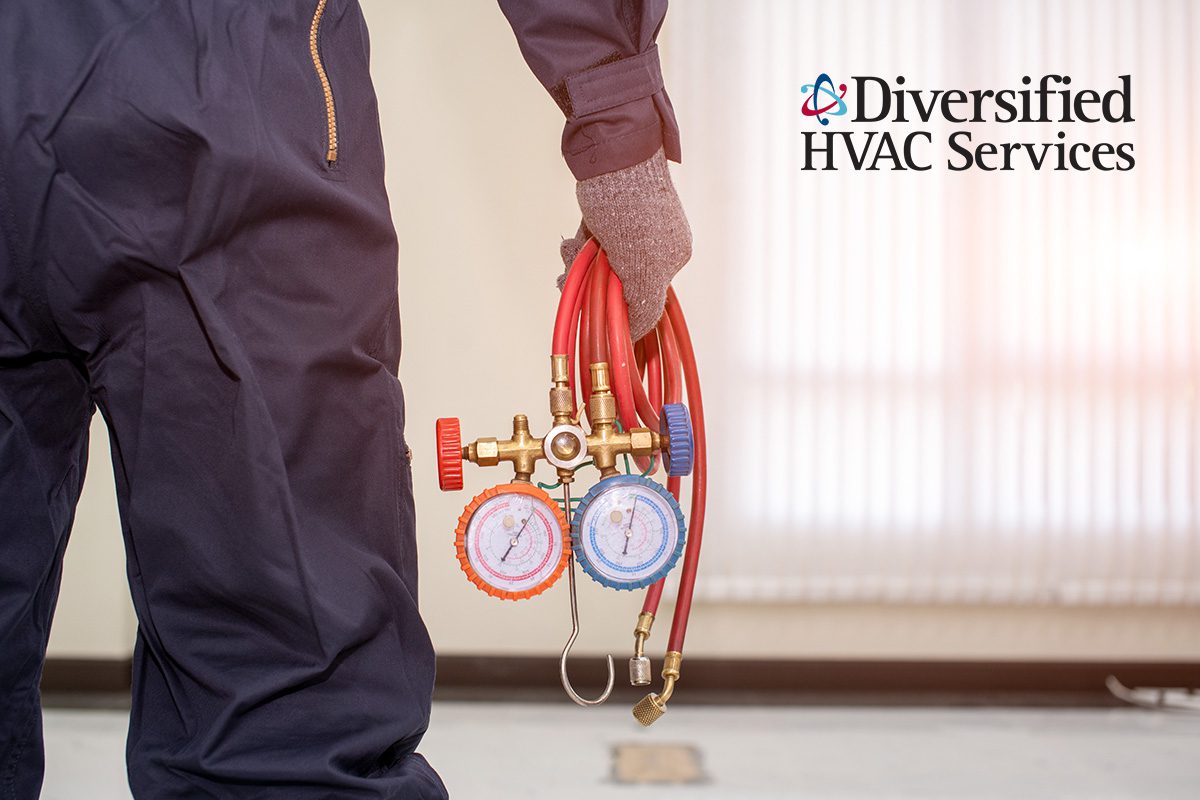A Guide to Commercial HVAC – Part 2
Last month, we told you all about how commercial HVAC systems work, including the different types. While it’s helpful to understand the design and construction of different types of commercial heating and cooling systems, you should also know what to consider in choosing your commercial HVAC system.
What To Consider When Choosing Your Commercial HVAC System
The price and complexity associated with commercial HVAC systems dictate careful planning and consideration. The right system will be right-sized to your building and will meet your needs, reducing the frequency of repairs needed.
Here are the components of your commercial HVAC design plan to consider:
Size of the Building – Commercial HVAC vs. Residential
Commercial HVAC systems are designed to serve larger spaces than residential units. For instance, residential air conditioning can have up to 5-ton capacity, while commercial rooftop units can be up to 50 tons.
Commercial units have large components and are more powerful, but the size and power of your system should first depend on the area size you have to heat and cool.
Layout of the Building – Zoning
A commercial building likely has a range of indoor climate needs. Separate offices, hallways, and different-sized rooms, as well as equipment rooms, require different controls and temperatures.
Think about the building layout to help your HVAC installation planner understand the zones you’ll need for efficient control.
Location of the HVAC Unit
As you consider your commercial system, think about where it should be located. Residential HVAC units are usually placed in the yard, basement, or attic.
Commercial units can be housed in a dedicated utility room that’s in the building’s basement, on the side of the building, or on the roof. There are advantages and disadvantages to each of these placements.
A rooftop unit saves horizontal space and doesn’t take up room in the building, and is easy for techs to access, but weather and birds can be an issue if the system isn’t properly protected.
Drainage of HVAC Unit
As you think about the location for your commercial HVAC units, think about drainage. HVAC units create condensation collected into a tray via a pipe system.
In a commercial building, this network of pipes and drains is larger and more complex than in a residence. Your HVAC installation and planning technicians should be able to suggest the most efficient and effective drainage plan for your commercial HVAC.
HVAC Logic Controllers/Sensors
Commercial HVAC uses an economizer to bring in cool outside air to flush heat out from the building. This increases the unit’s efficiency, reduces wear and tear, and increases ventilation. Residential units don’t usually have economizers.
Types of Commercial HVAC Systems
In the last post, we told you about package units, rooftop units, and more. We’ll remind you of that in this post. But we also want you to understand how to think about the different designs and variables present in commercial HVAC so that you can determine what is best for your business.
To recap, the types of commercial HVAC systems available are broken down by the delivery of conditioned air and the unit’s capacity.
Single-Split System
These systems heat and cool individual rooms; therefore, they are not suitable for larger buildings that have multiple rooms. Single-split systems contain a compressor, a furnace, an evaporator coil, and a refrigerant.
These units consist of an indoor and outdoor unit connected by a copper pipe. A single-split system is suitable for smaller buildings and individual server rooms.
Multi-Split System
Similar to a single-split system, multi-split systems have similar makeups but involve up to five indoor units that are all connected to the same, larger outdoor unit. Multi-split HVAC systems are suitable for different climate zones for multiple rooms.
Variable Air Volume
VAV systems create constant temperatures for multi-room spaces by varying airflow. Different areas of the building can be heated and cooled independently. This is a great option for buildings with multiple office spaces.
Variable Refrigerant Flow
VRF systems move refrigerant into the zone of the building that needs to be cooled or heated, so they are great for any type of commercial building except for very large rooms, like reception halls or other assembly spaces. VRF systems are highly effective and energy-efficient.
Constant Air Volume
Great for large spaces with few windows, like an exhibition hall, CAV provides constant airflow and
adjusts the air supply temperature to regulate the building’s climate. This is not a suitable commercial HVAC option for buildings with multiple cooling and heating zones.
Heat Pump
Heat pump systems work by removing heat from the air and diverting it outside or inside, depending on the temperature needs of the building. Heat pump systems work best in climates that don’t dip below 40 degrees and are commonly used in sports facilities and schools.
Next time, we’ll talk about common issues you can have with each of these types of commercial HVAC units.
In the meantime, if you have any questions about choosing the type, size, and location of your commercial HVAC system, give us a call!


